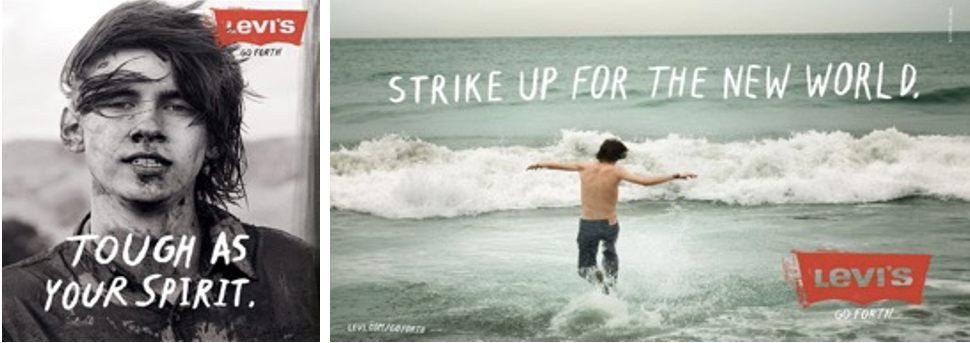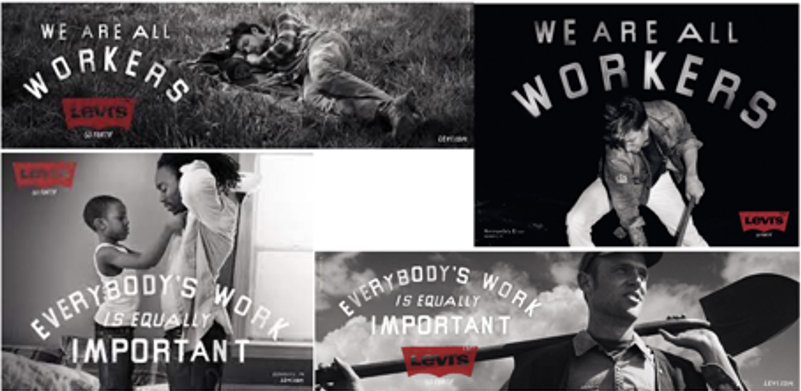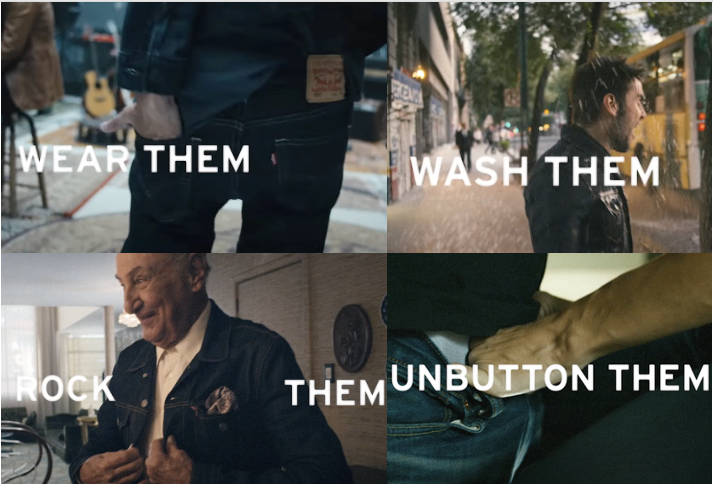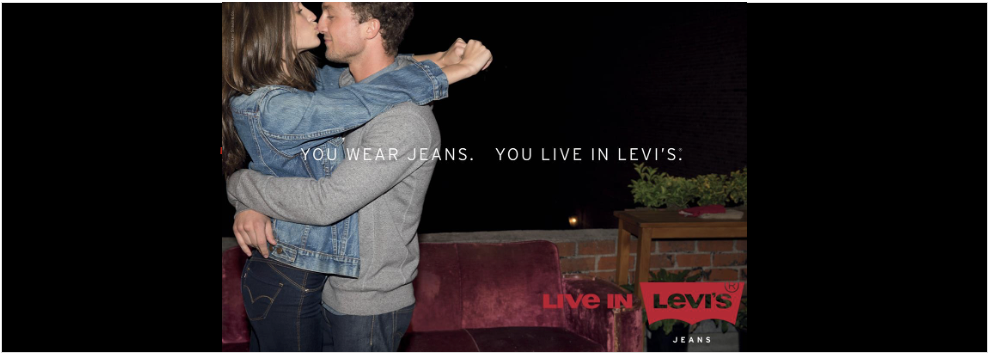It’s easy to get carried away by the creative brilliance of a one-off, stand-alone campaign. But the most instructive case studies look at long term brand evolution. One such case is the brand rejuvenation of Levi’s over the last decade, during which time global revenues steadily grew from $4bill at the end of the 2000s to $6bill in early 2022 (1). In this post we look at how Levi’s rediscovered its ‘brand soul’ to create and act on an inspiring brand idea.
Post by Prasad Narasimhan, Managing Partner based in Bangalore.
1. Levi’s loses its way
By the end of the 2000s Levi’s sales had dropped by almost one third, from $7.1bill in 2009 to $4bill. In response, the brand launched a new campaign called Go Forth. The bold creative was based on global research showing that “the youth of today believe it is up to them to make a positive difference in the world”. The ad targeted young idealists everywhere, but particularly in the US, Levi’s core market.
The campaign was applauded by advertising gurus as being a breakthrough.“The ads include the poetry of Walt Whitman, flags, paeans to the pioneering spirit, declarations of independence and salutes to hard work,” gushed the New York Times (2). However, the campaign fell into the trap of ‘laddering’ too high up into highly emotional territory and without a clear link to the core product. For a cynical young America hurt by the 2008 recession, the idealistic ad provoked an outpouring of anger on social media. Ad Week summed up the reactions: “Are you a young worker stuck in a dead-end job (or lacking one entirely) in a horrible economy? Don’t worry. Throw on a pair of Levi’s, and you’ll be ready to rule the world.”(3)
Brand sales remained stagnant despite massive advertising spend, with an $80 million budget for the US alone (2).

2. Still missing meaning
Armed with a new CMO and a new agency, Levi’s tried to evolve their approach. Their next attempt was less preachy, targeting “real workers, who see challenges around them and are inspired to drive positive change”. To activate the campaign, Levi’s invested millions to try and rejuvenate Braddock, a real-life steel town desperately seeking escape from economic doldrums. Whilst the activation was bold and worthy, the campaign still lacked relevance. It also failed to inspire any real product renovation or innovation.

Still wedded to the idea, but stung by criticism, Levi’s tried one final time to breathe life into Go Forth in their 2012 campaign (4). This featured a range of young people, from musicians to teachers, pulling on their Levi’s as a voiceover urged them on: “You’re going to find the cure. You’re going to be be famous. You’re going to be shameless.” However, still bereft of any meaningful product or message, the massive campaign again got little sales response.
3. Searching for truth
Pushed into a corner, Levi’s went back to the drawing board in 2014, searching for fresh insight. Their Eureka moment happened at a consumer’s home in Bangalore where an ardent Levi’s customer said, “you wear other jeans, but you live in Levi’s”. Captured in this statement was a magical mix of human truth (the desire to feel comfortable and confident in your clothes) and a brand truth (Levi’s are the original, authentic jeans that get better with age).
The resulting brand idea, Live in Levi’s, became a rallying cry that is still going strong eight years on. The simple phrase highlighted the brand’s enduring relevance, rooted in the product whilst also creating an endearing emotional space to build on. At last, the resulting communication had emotional ‘sizzle’ but also product ‘sausage’, in an optimistic and uplifting celebration of people, young and old, living life to the full in their Levi’s (below).
The brand idea was able to talk to existing Levi’s fans whilst also, crucially, driving penetration. “The energy, storytelling and iconic jeanswear at the centre of the effort will reinforce what long-time Levi’s loyalists love and attract new fans around the world,” commented CMO Jennifer Sey (5).

4. Brand vision to action
Importantly, and in contrast to the earlier attempts at brand rejuvenation, the new brand idea was used to drive product renovation and innovation. The brand went beyond just storytelling via communication to storydoing.“Live in Levi’s is more than a campaign,” explained Jennifer Sey (5). “Its an optimistic new direction that reinvigorates the Levi’s brand soul.“
The brand rejuvenation involved action on multiple fronts:
Tapping into new needs to help people live in their Levi’s: The new Levi’s Commuter range (below) was designed for people doing cycling, motorcycling and skateboarding. Levi’s Four-Way Stretch jeans helped regain business from athleisure.

Giving a fresh twist with tech: Levi’s reinvented the 40-year old legacy Truckers Jacket with a contemporary technology twist, allowing you to control you mobile from a button on the sleeve. This not just built brand equity it also enabled Levi’s to double their unit sales price in many advanced markets like Japan
Brand experiences: Levi’s created a range of high-touch brand experiences to help people live in their Levi’s. These included The Levi’s Tailor Shop (below), where you can customise your jeans or jacket, and the Levi’s Second Hand Store. These experiences have deepened emotional relevance, whilst enhancing stickiness and talkability for consumers.

5. Product-led sustainability
Bolstered by a strong business rebound, Levi’s has taken a bold stand on sustainability, a topic close to the hearts of its younger consumers globally. Their approach is rooted in the core product, as we recommended in our research on brand purpose here. This means the brand’s efforts do good for the planet and people, but also help drive revenue.
Project Water<Less is range of jeans that consumes 95% less water in the finishing process. The brand also engages with consumers in creative ways to get them to save water and support the cause (below).

Levi’s has also “done a Patagonia” in its recent campaigns, urging people to “buy better, wear longer”. This tackles head on the issues with ‘fast fashion’, encouraging people to buy better quality, more durable jeans and wear them for longer. This cleverly builds on and gives a contemporary refresh to the product truth of Levi’s, that by living in them for longer they feel more comfortable and look better.

In conclusion, Levi’s spectacular journey is a superb example of of brand rejuvenation. They successfully rediscovered their soul, rededicated themselves to their core and innovated boldly like the pioneer they once were.
Sources
1. Sales trends
2. NY Times (paywall)
3. Ad Week (paywall)
